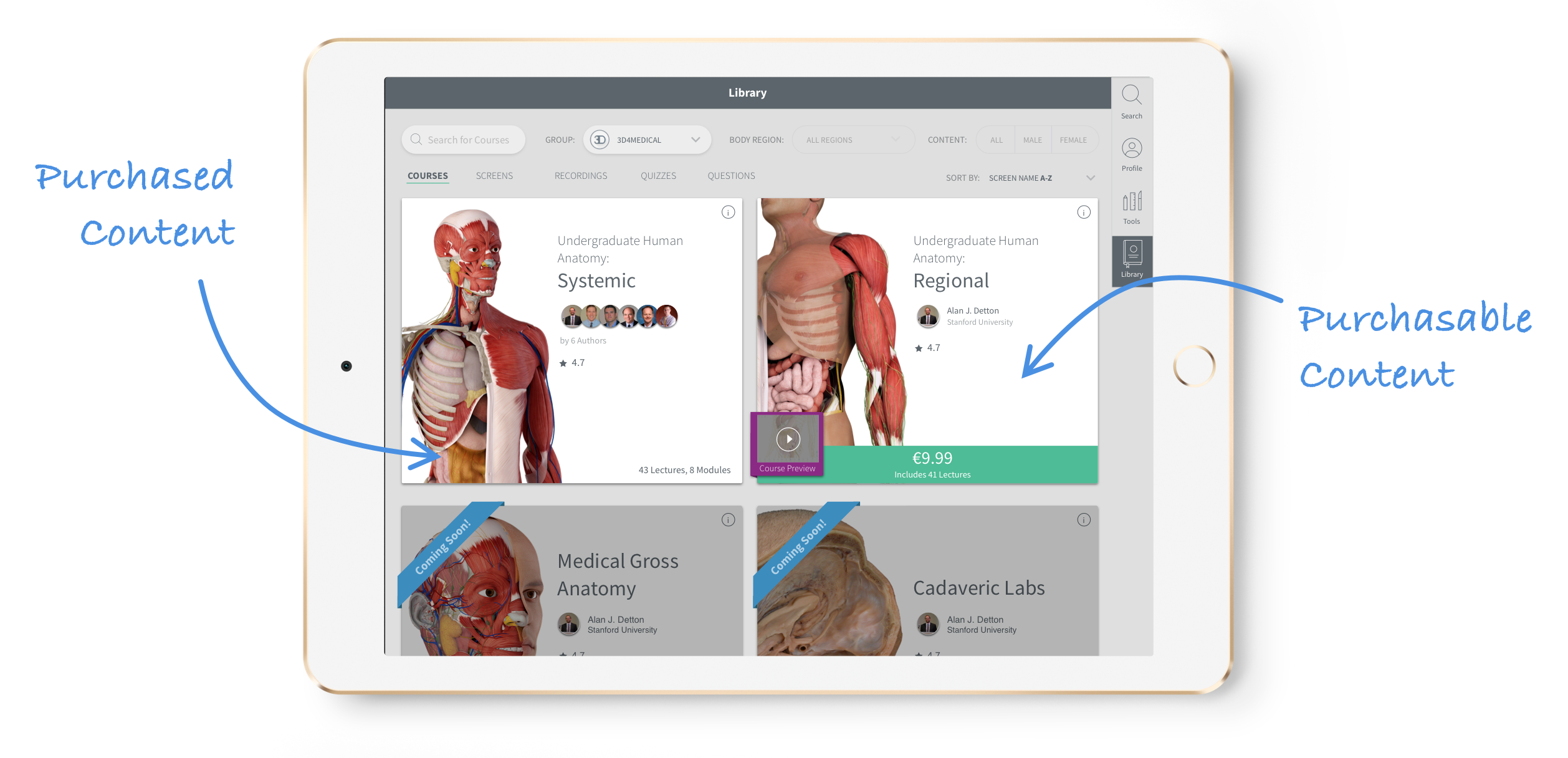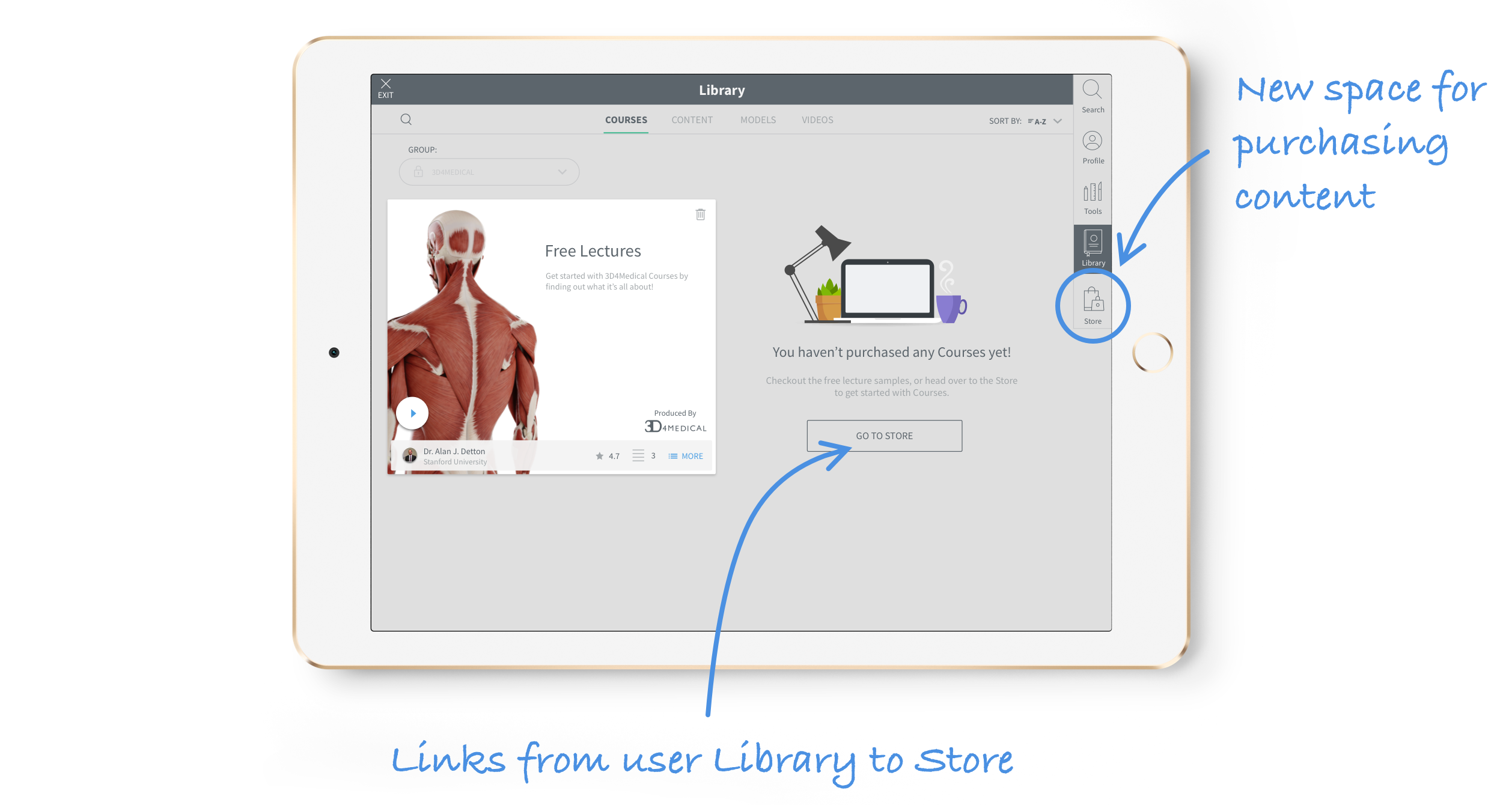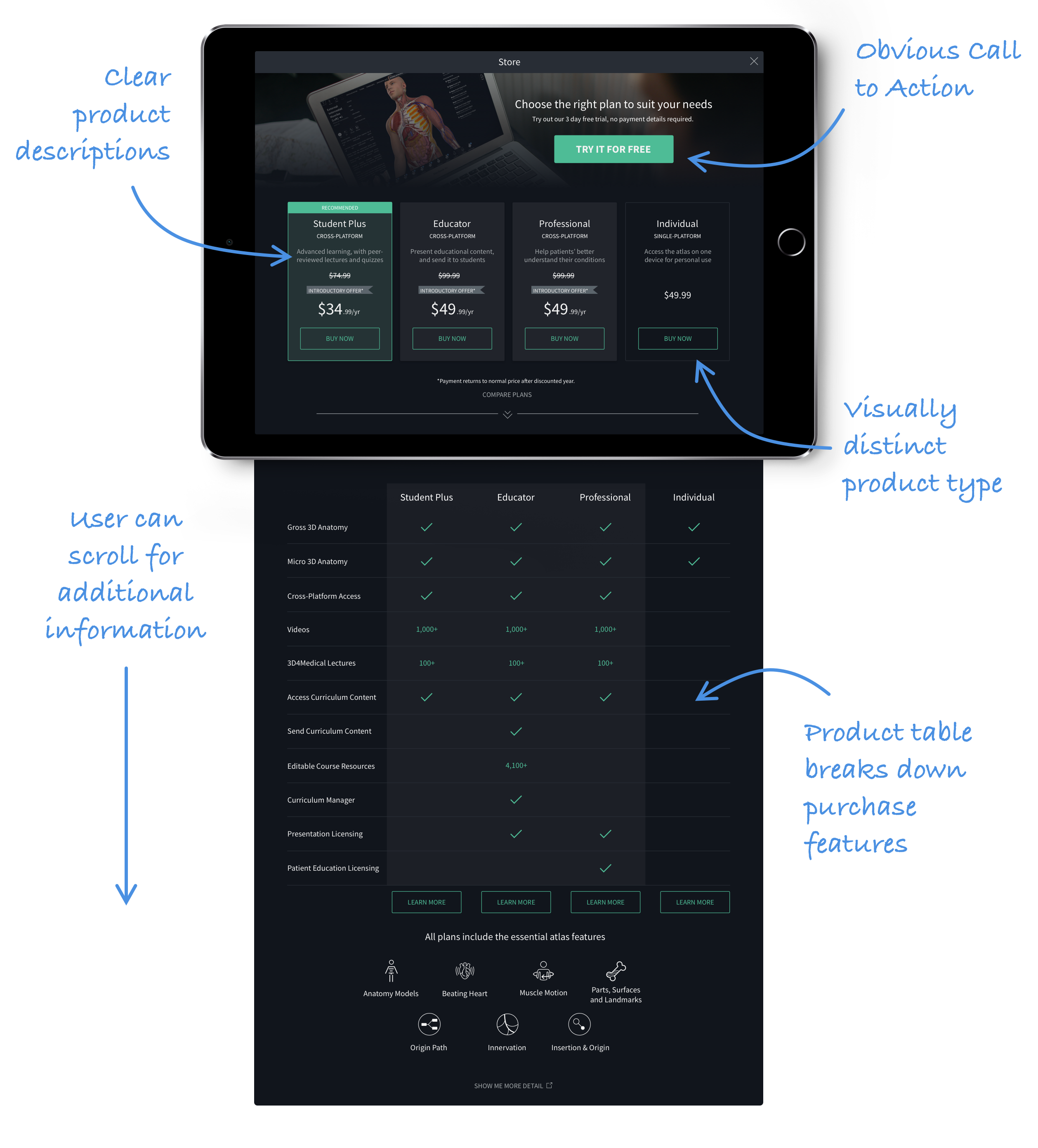

Moving to a Subscription Service
In updating from Complete Anatomy 2018 to Complete Anatomy 2019, the product moved from a once-off purchase to subscription service. The new offering would give users the choice of three subscriptions, based on their user type: Student Plus, Educator, or Professional.



Updating the Purchase Model
The new subscriptions would give users access to a wealth of educational content, lectures, and videos. In addition, we kept our current offering: a once-off purchase allowing access to the model. Due to our experimentation with subscriptions in the past, we knew users preferred a once-off purchase, but it was now up to the Design Team to show users the advantages of the subscription.
Complete Anatomy 2018: Library
In implementing this functionality in-app, it also gave us an opportunity to solve a long standing user issue with the Library (where some content was available for in-app purchasing in Complete Anatomy 2018). This ‘Library’ left users confused about what content they owned, and what content was available for purchase, as both lived in the same space.

In Complete Anatomy 2018, users failed to understand the relationship between purchasable and purchased content.
Complete Anatomy 2019: Library
A new design was proposed, creating a separate area to house the purchase flows. This left users with a Store for making purchases, and a Library for their content, with key touch points linking back to the Store.

Inital Store Design Sketches
I worked up a number of options based around when we present information to the user. In version 1, users choose a type first, and then we present them with purchasing options. Version 2 presents users with an overview of product features up front, with purchasing options further down the heirarchy. Version 3 gave users all the options up front, with the ability to purchase directly from the first page.

Throughout the design development, I paid careful attention to how the UI interactions could help explain how the user is moving through the interface.
Issues with Process
Throughout the conception and iteration of the Store design, I felt we encountered some procedural issues. Rather than clearly defining a set of requirements for the new purchase workflows, we ended up designing by committee without clear goals to stay focussed on. Because of these ever changing requirements, designs evolved in an unstructured way. This lead to some feature creep, creating a time crunch for both the design and development teams. In addition, the design risked becoming overly complex, hindering user understanding of their purchase options.


From the main store page, users could select a subscription type. From the detail page, there were links to each key feature of the subscription.
Changing business requirements meant the design evolved in an unstructured way.
In hindsight, the designed component tried to do to two things at once: tell users what the subscription options were, and also tell them everything that each option contained. For the next iteration, we set about examining user data from the Store and designing a new UI to maximise conversion rates.
Design Updates
With the design update, 3 main goals were outlined.
Increase rates of subscription versus once-off purchase.
The Store was original designed to present the subscriptions and once-off purchase options as equal. We weren’t confident that converting to a subscription model would be well received by users, so to minimise risk we needed to be very clear that the once-off purchase was still available. Ultimately when the Store went live, the subscriptions made up 50% of overall purchases - far exceeding business expectations. Our new goal would be to drive this number even higher, until eventually we can phase out the once-off purchase.
Better describe purchasing options to users.
Create separate components to show users firstly what the purchasing options were, and then what each option contained.
Increase trial rates.
Complete Anatomy offers a 3 day free trial to users who register for an account using their email. A user must be registered in order to purchase, and conversion rates here were quite good - 20% of users who registered went on to make a purchase. However, the rate at which users were registering was very low - only 25% of users who download the app went on to register. Given the huge amount of content that became available when registering, this presented a huge opportunity to increase conversion and purchases.
Design update focussed on clearer messaging, and increasing conversion rates.
New Store Landing Page
The new landing page design focussed on increasing those key metrics.

The new Store is set for release with Complete Anatomy 2020, scheduled for June 2019.